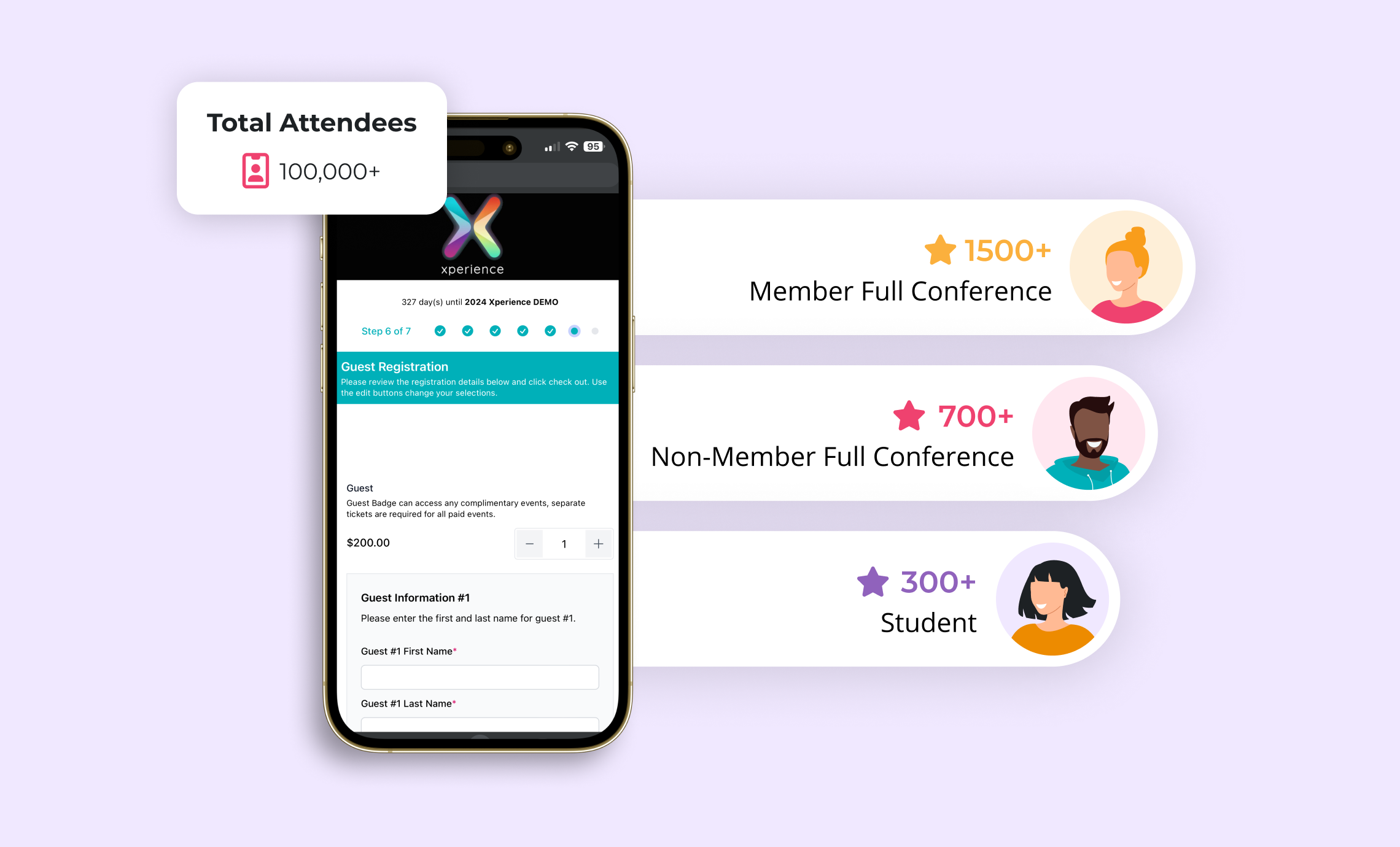Event websites are meant to give users general information, educate them about the event and its purpose, and peak the curiosity and interests of potential attendees.
A great event website will do all of that and convince potential attendees to register too.
We’ve put together a few tips to follow to help you create a great event website that engages attendees and gets them to register on the spot!
#1 – Keep it short and sweet
Did you know that people generally have only an 8-second online attention span? Research has shown that users will bounce from site to site very quickly so it’s important to keep your event’s main information front and center. Be sure the landing page of your website can be easily read and the main points are found quickly. Most users will be looking for the same information and by keeping the text to a minimum, you decrease the chance of users becoming disinterested and leaving the page. Make sure the following information is clearly displayed and easy for users to find:
- Event name
- Event agenda and descriptions
- Date, time, and location
- Registration types and cost to attend
- CTA to complete registration
#2 – Checkout should be a breeze
Attendees have already answered your demographic questions and given their personal information, don’t make them go through a complicated payment process too! Checkout for registration or tickets or anything else on your event website should be a smooth and uncomplicated process. The more steps it takes to complete payment, the more likely potential attendees are to abandon their purchase and never complete their registration. Keep it simple making checkout as few steps as possible and always be sure to use a secure payment processer for your attendee’s data security.
#3 – Provide plenty of opportunity to register
Don’t just put one “register now” button on your website, place multiple callouts and buttons on various pages so visitors are always able to find where to register. Add a pop-up for visitors who are about to leave your website and offer a mailing list form so they can get more information. Some visitors may not be ready to register right away but they would like more information.
#4 – Don’t just talk the talk
Potential attendees can be tough to convince using only a description of your event and short bios of your event speakers. Consider posting testimonials from previous attendees with an image of their smiling face to help give credibility to your event and its value. You can also use some quotes from your event speakers to give users a taste of what to expect if they attend. Make it even more interesting to potential attendees and use video to engage their interests. You can post a “highlights reel” from a previous event or clips of interviews with former attendees. This will help create interest and could convert some people from potential attendees to completed registrations.
#5 – Get creative and make it visually interesting
Providing your event’s information online doesn’t have to be dull. Keep things interesting and use images from a previous event to draw potential attendees in. Make sure to avoid using stock images or bland photos of someone speaking at a podium and instead think outside the box when selecting images. Photos of attendees enjoying themselves at an evening reception, engaged in a session, or interacting on the exhibit floor are some examples of fun and upbeat images to use to entice users. Video is a great resource to use to keep your website exciting and can help bring in more completed registrations. A recent study by eyeviewdigital.com shows that adding a video on the landing page of your website can increase conversions by 80%. Aside from exciting and welcoming images, make sure your website is easy to read. This may seem simple but nothing is worse than using a color scheme that makes reading text impossible. Stick with light colored backgrounds with dark text as this is the easiest to read and is more visually appealing.
#6 – Make it mobile friendly
A recent study of mobile marketing statistics shows that 80% of internet usage is driven by mobile devices. This means that a lot of users will visit your event’s website from their mobile device not just once but multiple times, and for different reasons. It’s important to keep this in mind when creating your website so that the functionality is consistent throughout different devices. You want to be sure that each section of your website can be viewed from a mobile device so the user is able to get the information they need. For example, have your session agenda with description information available to view on a mobile device. Not only will this help provide the most information to users, but it could help potential attendees decide to register. Equally important to functionality is security. Since some users will use their mobile device to register, be sure payments can be completed using a secure payment method.
#7 – Reel ‘Em In!
Now that you’ve got the bait, time to throw your hook in the water and start reeling them in! Develop a marketing campaign to get your website in front of your target audience. Ask speakers and content providers from the current year and past years to share your website on social media. Offer a referral discount for attendees who refer a friend and tease content in emails to your past attendees.
Your event website should help make your event stand out from the crowd and provide attendees with the information they need. By keeping these tips in mind when creating your event website, you will be able to engage users and educate them in an easy and efficient way.
Looking for more event advice? Subscribe to our blog and contact us today!


